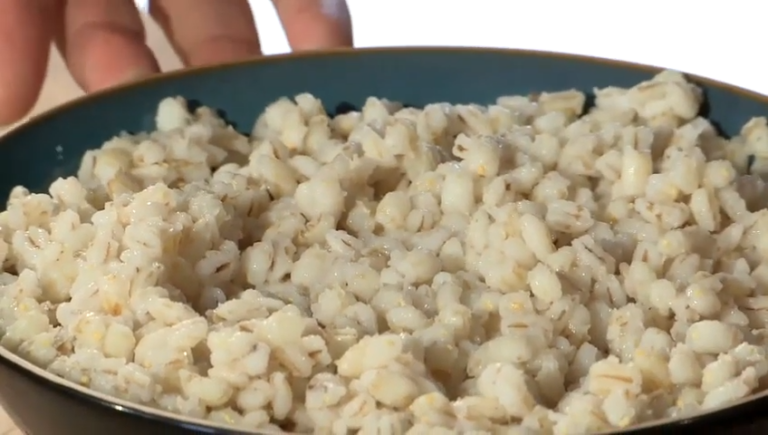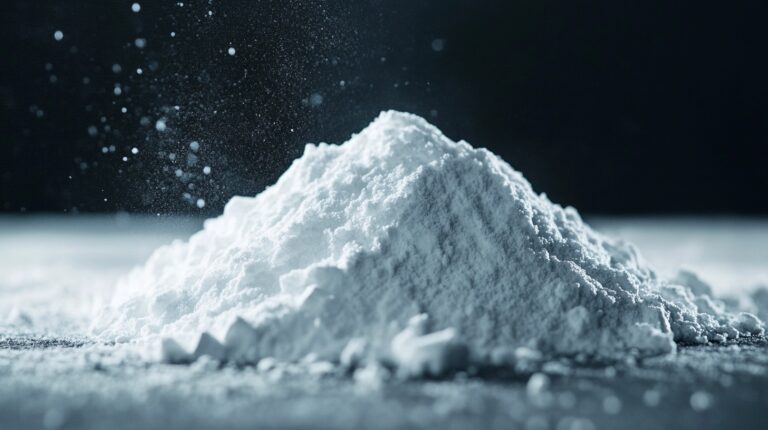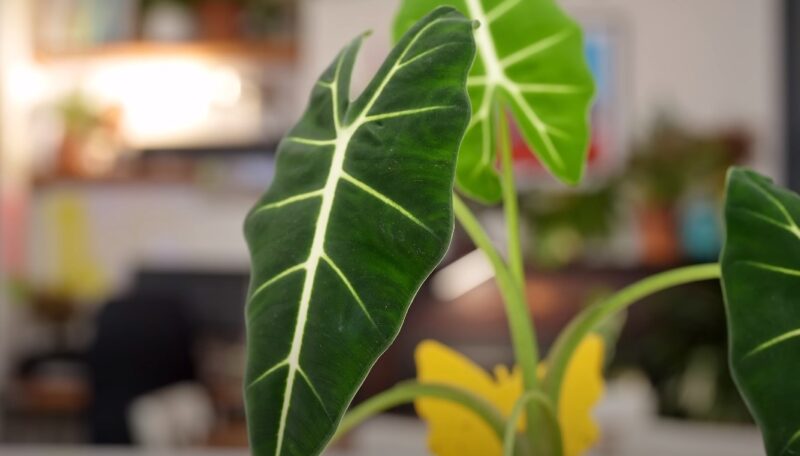Owning an elephant ear plant brings a touch of the tropics to your home or garden. Those massive, lush leaves are a sight to behold—until they start turning yellow.
You know how it is; watching your prized plant slowly fall apart is a sad process, but there are solutions. So, let’s figure out what’s causing your elephant ear plant to lose its vibrant green and how to fix it.
Natural Life Cycle
First off, don’t panic if you see a few yellow leaves. It’s normal for older leaves to turn yellow as part of the plant’s natural lifecycle.
Just like humans, plants shed their old parts to make way for new growth. So, if it’s only one or two leaves here and there, your plant is probably just doing its thing.
Temperature Troubles
Elephant ears love warmth. If they’re exposed to cold temperatures, the leaves can turn yellow or even brown. Too little sunlight can lead to chlorosis, where leaves turn yellow due to a lack of chlorophyll.
Aim to keep them in an environment that’s 65-75°F (18-24°C). If you’ve got them outside and it gets chilly, consider moving them indoors or providing some protection from the cold.
Sunlight Issues
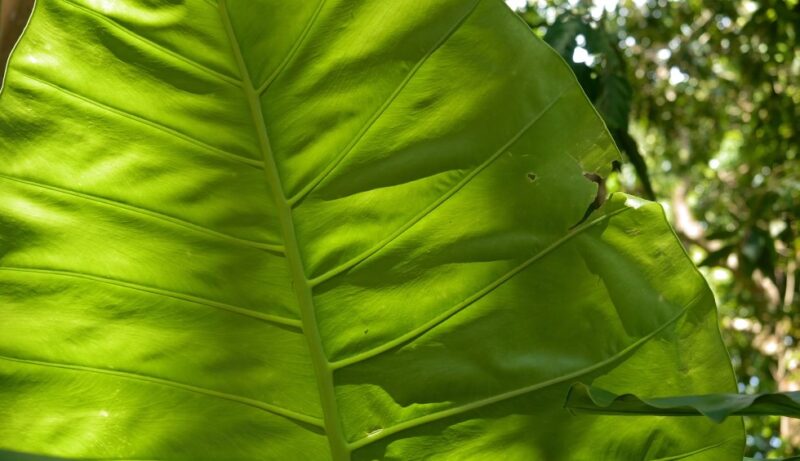
These plants are picky about their sunlight. Too much direct sun can scorch the leaves, while too little light can cause them to yellow.
They thrive best in bright, indirect sunlight. If you’re growing them indoors, place them near a window with filtered light. If they’re outside, find a spot with dappled shade.
Consistent and stable indirect light and maintaining an appropriate temperature can prevent environmental stress-induced yellowing.
Water Woes
Over-watering and under-watering are both common culprits. The soil should be allowed to slightly dry out between waterings. Consistent moisture is key, but the roots shouldn’t be sitting in water.
Ideally, give your plant about 2-3 inches of water per week. Stick your finger in the soil up to the first knuckle—if it’s dry, it’s time to water.
Overwatering or underwatering can lead to yellow leaves. Roots can drown from too much water or become dehydrated from too little, both causing stress to the plant.
Soil Conditions
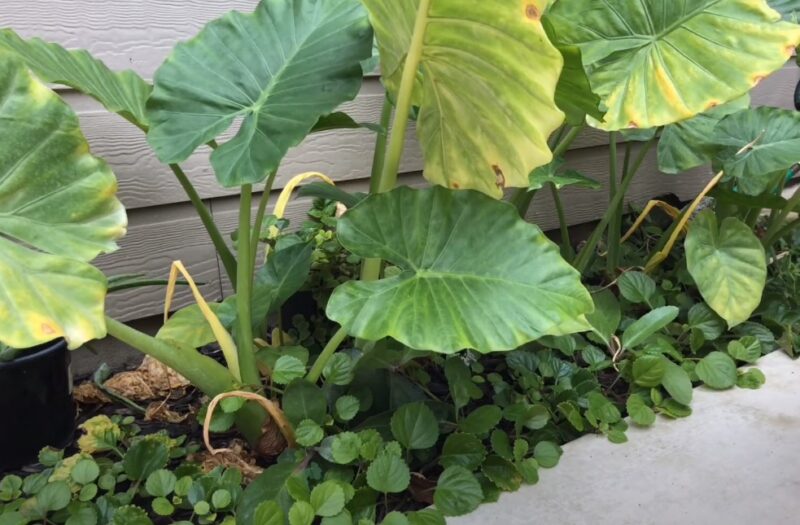
Elephant ears aren’t too fussy, but they do have preferences. They like slightly acidic soil with a pH of 5.5 to 6.5. Ensure your soil is rich in organic matter.
If it’s looking a bit sparse, mix in some compost or manure when you plant. This helps with drainage and provides the nutrients your plant needs.
Elephant Ear plants prefer consistently moist soil. Allowing the top inch of soil to dry out between watering is advisable.
Nutritional Needs
Yellowing leaves can be a sign of nutrient deficiencies. If the top leaves are starting to yellow first, it might be a lack of nitrogen or other essential nutrients.
Feed your plant monthly with a balanced, water-soluble fertilizer. Adding a bit of Epsom salt can also help keep the foliage rich and green.
Common deficiencies include nitrogen, phosphorus, or potassium. Ensure the plant receives a balanced fertilizer monthly.
Root Damage
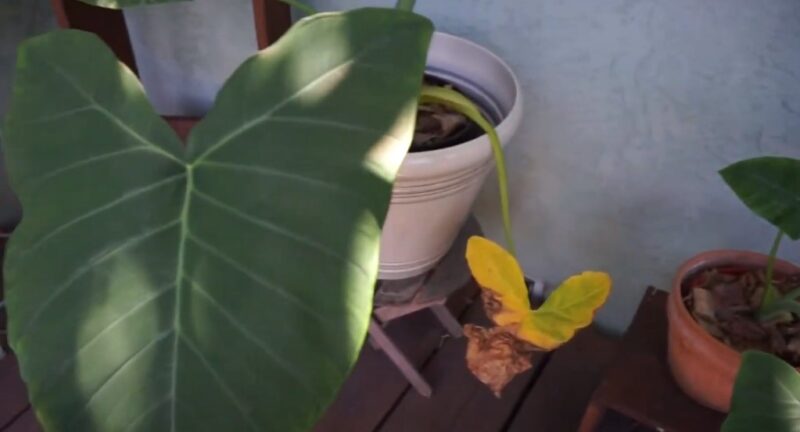
Roots need space to grow. If your plant is in a pot that’s too small, the roots can become compacted, leading to yellow leaves.
Repot your plant into a larger container with good drainage to give the roots room to breathe and expand.
Acclimation
When you first bring an elephant ear plant home, it may go through an adjustment period. The change in environment can cause some leaves to yellow.
Give it some time to settle in, and it should bounce back.
Acclimating your plant should be gradual to prevent shock.
Pruning and Maintenance
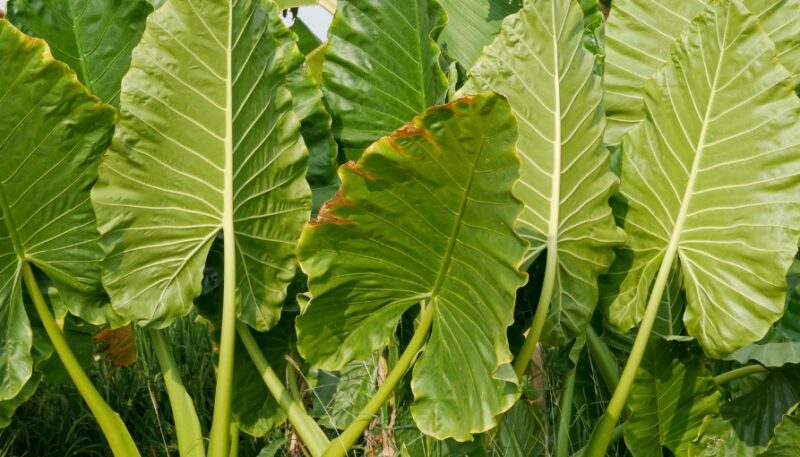
Regular pruning helps keep your elephant ear plant in shape and removes those aging or yellowing leaves. It’s a bit like giving your plant a haircut to keep it looking fresh.
- If the leaves turn yellow, it is advisable to prune them. Cut back the yellow leaves to the soil level.
- Regular pruning helps maintain the plant’s shape and encourages new growth.
Propagation
Elephant ears can be propagated by dividing tubers in the fall. Alternatively, you can plant seeds from the flowers. They germinate quickly and give you new plants to enjoy.
Perennial or Annual
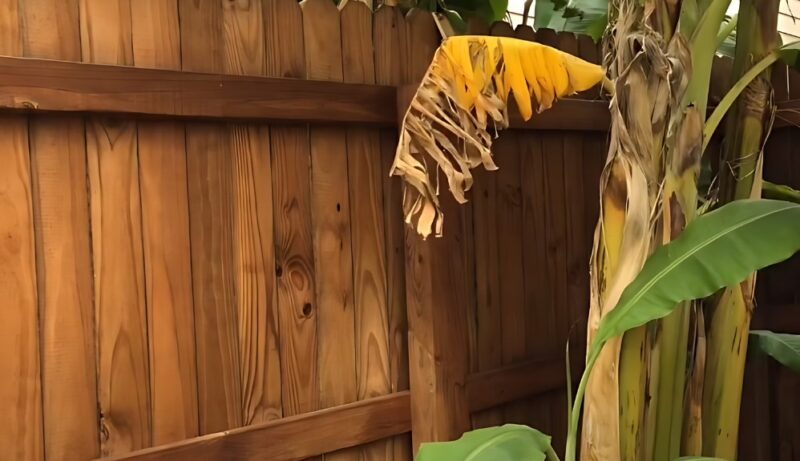
Elephant ear plants, including species like Colocasia, Alocasia, and Xanthosoma, can be grown as either annuals or perennials depending on your climate. In warmer climates (USDA zones 8-11), they can be perennial and survive year-round.
In cooler climates, they are often treated as annuals or brought indoors during the winter to be grown again the following year.
Invasiveness
Be aware that in some areas, Elephant Ears can become invasive. They can spread aggressively and outcompete native vegetation, which is why it’s essential to manage their growth and spread.
Final Thoughts
Monitoring and adjusting your care routine based on the plant’s needs can prevent or fix discoloration.
With the right attention, your elephant ear plant will continue to be a stunning centerpiece in your home or garden.





